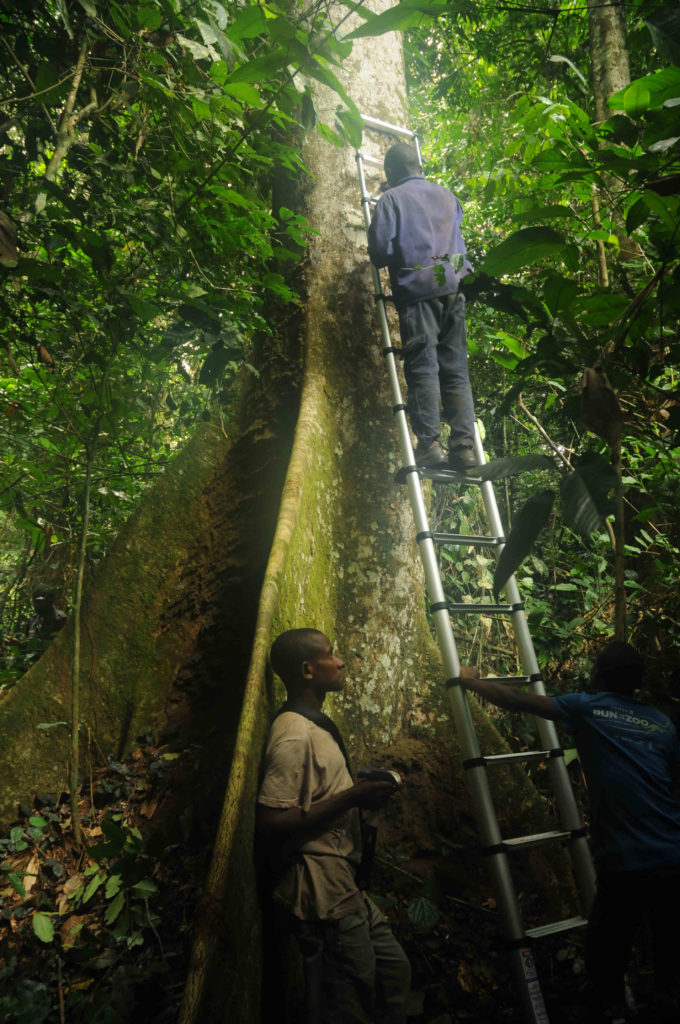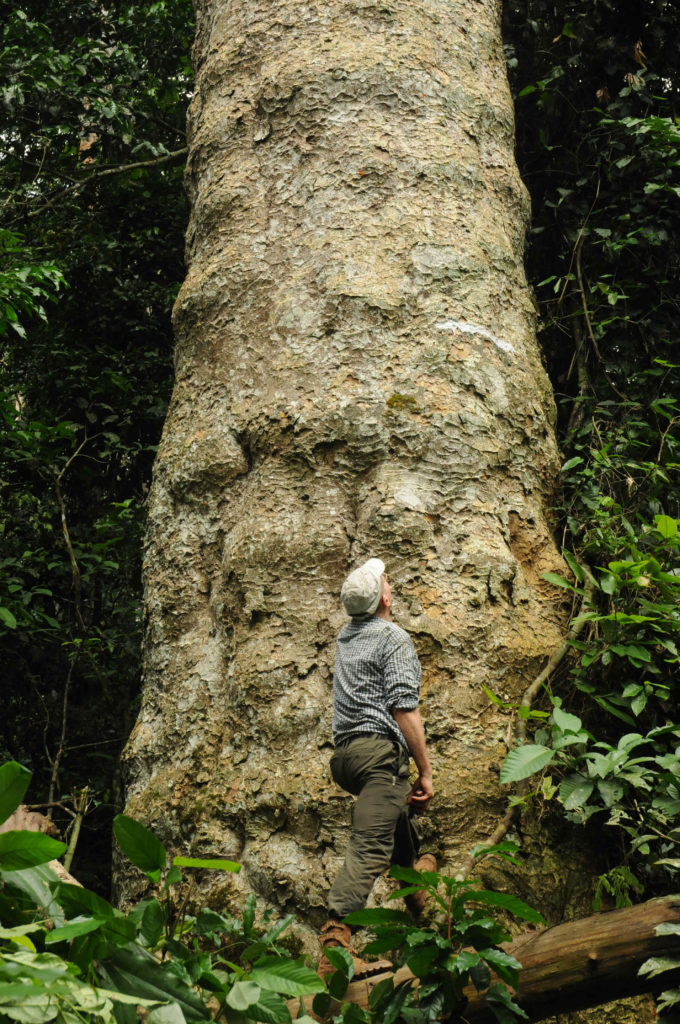There is a growing interest in large trees. For a long time, across the world, big trees have been cultural icons. There is now a growing awareness that they play a disproportionately important role in carbon sequestration, water and nutrient cycling compared to more standard sized trees. Not only are they amazing to look at but they are important to our future on this planet.
For more than thirty years I have had the privilege of working in the rain forest of the Sangha Trinational in Republic of Congo, Cameroon and the Central African Republic. With colleagues from the three countries we have documented the plants growing in this series of trans-border protected areas. Our data was sent by the three governments to UNESCO as part of their successful application to make the Sangha Trinational a world heritage site.
During our time in the forest we have come across exceptionally large trees. For some species we regularly found a really big tree every couple of days. For other species it might have been 5 or 10 years between seeing a big one. As I thought more and more about the largest trees I had seen, I asked my colleagues questions about the really big trees. “Which species are the commonest big trees?” “How many times have you seen really big trees of this species, or that one? Which species become the largest? For years my questions were tolerated – and I got some interesting and interested replies. But nobody could give me definitive answers, because none of us had the data.
There are good reasons for this. The biggest trees in any forest are the rarest and it takes a lot of time to find them. Big rain forest trees can also be difficult to measure due to buttresses. To make the measurements comparable from one species to the next and from site to site we have to make them at critical points on the tree trunk.

To get more data on big trees we set up a series of 10-hectare permanent forest plots in which we found, recorded with a GPS, identified, measured and tagged over a thousand big trees. These big plots sample many more big trees than the standard 100 x 100 m plots used by forest ecologists in rain forest over the tropics. We carried out this research in Nouablé Ndoki National Park, Republic of Congo. In the paper we have just published in the journal Plants, People, Planet we answered two questions.
The first question was: “how many species become the really large trees in the Sangha Trinational forest”? The answer was surprising. We found that more than 100 species reach the largest category over 80 cm diameter. This means that the big trees are not only important for their ecosystem functions – like in the carbon and water cycles for which rain forests are known to play a global role- but they also have a very important role in maintenance of biodiversity.
The second question was: “what is the commonest species of big tree”? The answer to this one is sobering. The commonest species was a highly sought-after timber called Sapele (Entandrophragma cylindricum) that you can buy at several outlets in the UK. Sapele was assessed as Vulnerable on the Red List of Threatened Species published by the International Union for Conservation of Nature (IUCN).

Our third finding concerned food. Almost half the species (including Sapele) that become big trees provide a contribution to the diet of the people that live in the Sangha Trinational. The foods range from oil-rich seeds, honey and edible caterpillars to symbiotic mushrooms.
The list of reasons why big trees are important in tropical rain forests is getting longer with each study: this research shows how their conservation will support the maintenance of biodiversity and food security.
References
Harris, D.J., Ndolo Ebika S.T., Sanz C.M., Madingou, M.P.N., Morgan, D.B. (2021). Large trees in tropical rain forests require big plots. Plants, People, Planet. 1–13. https://doi.org/10.1002/ppp3.10194
Hawthorne, W. 1998. Entandrophragma cylindricum. The IUCN Red List of Threatened Species 1998: e.T33051A9753619. https://dx.doi.org/10.2305/IUCN.UK.1998.RLTS.T33051A9753619.en.
Pinho, B. X., Peres, C. A., Leal, I. R., & Tabarelli, M. (2020). Critical role and collapse of tropical mega-trees: A key global resource. Advances in Ecological Research, 62, 253–294. Academic Press.
Schweiger, A. H., & Svenning, J. C. (2020). Analogous losses of large animals and trees, socio-ecological consequences, and an integrative framework for rewilding-based megabiota restoration. People and Nature, 2, 29–41. https://doi.org/10.1002/pan3.10066
